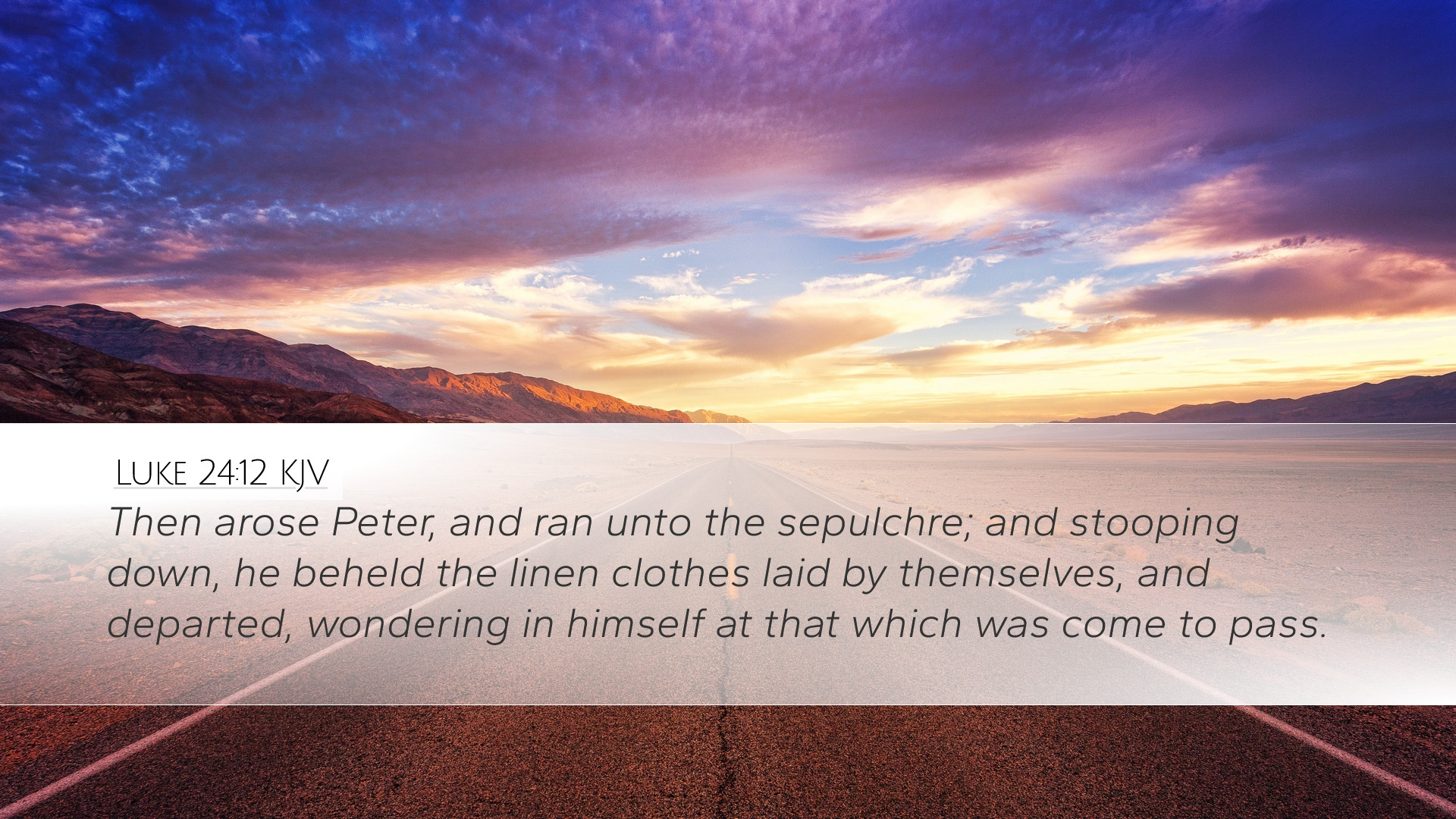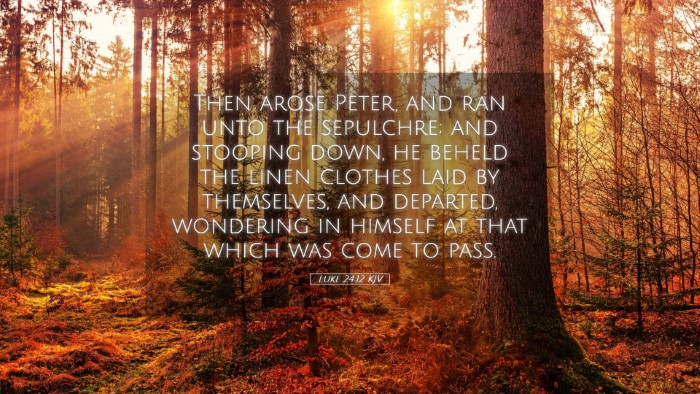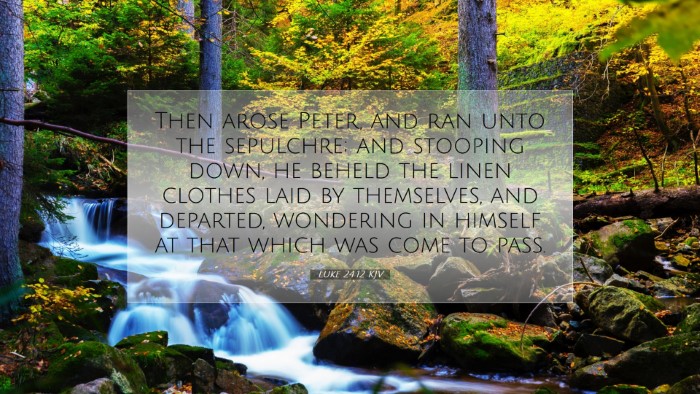Commentary on Luke 24:12
Verse Context: Luke 24:12 states, "But Peter arose and ran unto the sepulchre; and stooping down, he beheld the linen clothes laid by themselves, and departed, wondering in himself at that which was come to pass." This verse occurs after the resurrection of Jesus, marking a pivotal moment in the Christian faith, underscoring the initial disbelief even among His closest followers.
Introduction
This commentary synthesizes insights from various public domain sources, including Matthew Henry, Albert Barnes, and Adam Clarke, to provide a comprehensive examination of Luke 24:12. The apostle Luke narrates Peter's response to the report of the empty tomb, encapsulating themes of doubt, curiosity, and the transformative nature of resurrection.
Exegesis of the Text
Peter's Response: Peter's reaction is highlighted by his urgency and effort; he "arose and ran." This sense of urgency reflects his perplexity and longing for clarity regarding the resurrection. Matthew Henry notes the importance of his quickness to investigate the claims of the resurrection, illustrating a deep-seated concern for the truth of the matter.
Key Components
- The Act of Running: The act of running demonstrates Peter's impulsive nature and fervent desire to confirm the news of Jesus' resurrection. Albert Barnes points out that this physical response also symbolizes a spiritual awakening, suggesting that Peter, despite his previous denials, still longed for Jesus' affirmation.
- The Sepulchre: The sepulchre represents not only a physical location but also a theological crossroads. Adam Clarke emphasizes that the tomb was a place of despair turning into hope, where death's finality was overturned by the promise of eternal life found in Christ's resurrection.
- Linen Clothes: The sight of the linen clothes provides further evidence of the miraculous nature of the event. Henry notes that the clothes being laid by themselves indicated that Jesus didn't simply leave the tomb, but rather, rose in a glorified state, transcending the physical constraints that bound Him.
Theological Implications
The resurrection of Christ is central to Christian theology. It serves as the cornerstone of faith, affirming the victory over death and the promise of resurrection for believers. Luke 24:12 encapsulates the moment when doubt transitions into wonder. The gospel writers consistently highlight this transition, which reflects the authentic human struggle with belief following profound loss.
Doubt and Wonder
Doubt and wonder intertwine significantly in this passage. Peter's wondering is not merely about the event's reality but also about its implication for his faith and relationship with Jesus. Albert Barnes remarks that this wonder could lead to a deeper understanding and acceptance of Christ’s teachings, showcasing the transformative journey from doubt to belief.
Encouragement for Believers
This narrative serves as encouragement for modern believers. The struggles with doubt experienced by Peter are relatable for many. The subsequent exploration of faith, where one seeks truth and understanding in a relationship with the risen Christ, is foundational for spiritual growth.
Application in Ministry
Pastors and teachers can draw from Luke 24:12 when addressing congregational doubts about faith. Encouraging investigative faith, as illustrated by Peter, allows for a safe space where members can express their uncertainties while also being spurred toward deeper engagement with Scripture and belief in the resurrected Christ.
Preaching Points
- Importance of Personal Investigation: Encourage congregants to seek personal experiences of faith and truth, mirroring Peter's run to the tomb.
- Transformative Power of the Resurrection: Proclaim the resurrection not only as a historical event but as an ongoing source of hope and transformation in the lives of believers.
- Community of Doubt:**: Foster a sense of community where doubt can lead to questions, and questions can lead to deeper faith.
Conclusion
Luke 24:12 is a critical text that reflects the emotional and spiritual transitions faced by the earliest disciples. By analyzing Peter’s actions and the implications of the empty sepulchre, this commentary encourages an understanding of faith's complex nature—balancing doubt with wonder, and urging believers to seek divine truth in their spiritual journeys. This passage serves as a powerful reminder of the resurrection's pivotal role in Christianity, instilling hope and encouraging personal exploration of faith.


